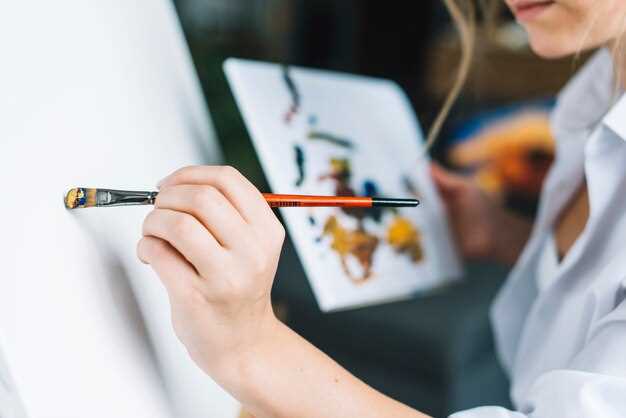The Significance of Appraisals in Art Insurance – Guaranteeing Precise Valuation for Sufficient Coverage

When it comes to safeguarding valuable artistic assets, a crucial aspect that cannot be overlooked is the process of appraisals. These evaluations play a pivotal role in the realm of art insurance, guaranteeing accurate estimation for appropriate coverage. By employing meticulous assessment techniques, insurers can ascertain the true value of artworks, enabling them to provide comprehensive protection against potential risks.
Art appraisals serve as a fundamental tool in determining the worth of artistic pieces, encompassing a wide range of factors such as historical significance, artistic merit, rarity, and market demand. These evaluations are conducted by qualified professionals who possess an in-depth understanding of the art market and its intricacies. Through their expertise, they are able to evaluate the authenticity, condition, and provenance of artworks, ensuring a reliable valuation that reflects their true value.
The significance of accurate appraisals in art insurance lies in the ability to establish a solid foundation for coverage. By obtaining a precise assessment, insurers can tailor policies that adequately protect the insured artworks against various risks, including theft, damage, or loss. Moreover, accurate valuations enable policyholders to receive appropriate compensation in the event of a claim, ensuring that they are adequately reimbursed for the true value of their artworks.
Understanding the Role of Appraisals in Art Insurance
Appraisals play a crucial role in the realm of art insurance, serving as a fundamental tool for ensuring accurate valuation and adequate coverage. By providing a comprehensive assessment of the value of artwork, appraisals enable both insurers and policyholders to make informed decisions regarding insurance coverage and claims. This section aims to delve into the significance of appraisals in art insurance, shedding light on their role in safeguarding the interests of all parties involved.
Assessing the Value of Artwork
One of the primary functions of appraisals in art insurance is to assess the value of artwork. Through a meticulous examination of various factors such as the artist’s reputation, provenance, condition, rarity, and market demand, appraisers determine the fair market value of a piece. This valuation serves as the foundation for determining the appropriate insurance coverage, ensuring that the artwork is adequately protected in the event of loss, damage, or theft.
Establishing Trust and Transparency
Appraisals also play a crucial role in establishing trust and transparency between insurers and policyholders. By providing an independent and objective assessment of the artwork’s value, appraisals help to mitigate any potential disputes or disagreements that may arise during the claims process. This ensures that both parties have a clear understanding of the artwork’s worth, facilitating a smoother and more efficient resolution of any insurance-related matters.
In conclusion, appraisals are an integral component of art insurance, serving as a means to accurately determine the value of artwork and establish trust between insurers and policyholders. By recognizing the role of appraisals in art insurance, individuals can ensure that their valuable art collections are adequately protected and that their insurance coverage aligns with the true value of their assets.
The Significance of Accurate Valuation in Art Insurance Policies

Ensuring the precise assessment of the value of artwork is of utmost importance when it comes to art insurance policies. The accurate valuation of art pieces plays a crucial role in determining the appropriate coverage and ensuring that policyholders receive adequate compensation in the event of loss or damage. This section explores the significance of accurate valuation in art insurance policies and highlights the various factors that contribute to the valuation process.
The Role of Accurate Valuation in Art Insurance
Accurate valuation serves as the foundation for art insurance policies, as it determines the coverage limits and premiums. Without a precise understanding of the value of the artwork, policyholders may risk being underinsured or paying excessive premiums. By accurately assessing the value, insurers can provide appropriate coverage that aligns with the true worth of the art piece, ensuring that policyholders are adequately protected.
Factors Influencing the Valuation Process
The valuation of artwork involves a comprehensive analysis of various factors that contribute to its worth. These factors include the artist’s reputation, the rarity of the piece, its historical significance, condition, provenance, and current market trends. Each of these elements plays a crucial role in determining the accurate value of the artwork and subsequently affects the insurance coverage provided. Insurers work closely with appraisers, art experts, and auction houses to assess these factors and arrive at an accurate valuation.
| Factors Influencing Valuation | Description |
|---|---|
| Artist’s Reputation | The artist’s standing in the art world can significantly impact the value of their artwork. |
| Rarity | The scarcity of a particular art piece can drive up its value. |
| Historical Significance | Artworks with historical importance often command higher valuations. |
| Condition | The state of preservation and maintenance of the artwork can influence its value. |
| Provenance | The documented history of ownership and authenticity of the artwork impacts its value. |
| Market Trends | The current demand and market value of similar artworks affect the valuation. |
Accurate valuation in art insurance policies is crucial to ensure that policyholders receive appropriate coverage that aligns with the true value of their artwork. By considering various factors and working with experts, insurers can accurately assess the worth of art pieces and provide comprehensive coverage to protect against potential losses or damages.
The Impact of Inaccurate Valuation on Art Insurance Claims
When it comes to art insurance claims, the accuracy of the valuation plays a crucial role in determining the outcome. Inaccurate valuation can have significant consequences, affecting both the insured and the insurer. This section explores the various ways in which inaccurate valuation can impact art insurance claims, highlighting the importance of obtaining precise and reliable appraisals.
1. Underinsurance and Financial Loss
One of the primary impacts of inaccurate valuation in art insurance claims is the risk of underinsurance. If a piece of art is undervalued, the insured may not receive adequate compensation in the event of a loss or damage. This can result in significant financial loss for the policyholder, as they may not be able to replace or repair the artwork at its true value. Additionally, underinsurance can lead to disputes and dissatisfaction between the insured and the insurer.
2. Overinsurance and Premium Inflation
On the other hand, overvaluation of art can also have negative consequences. Overinsurance occurs when the insured declares a higher value for the artwork than its actual worth. This can lead to inflated premiums, as the insurer calculates the coverage based on the declared value. Over time, this can result in unnecessary expenses for the policyholder, paying higher premiums for coverage that exceeds the artwork’s true value. Moreover, overinsurance can raise suspicions of fraud and potentially complicate the claims process.
It is crucial for both the insured and the insurer to ensure accurate valuation of art in order to avoid these detrimental effects. Reliable appraisals conducted by qualified professionals play a vital role in determining the true value of artwork, providing a solid foundation for art insurance claims. By obtaining accurate valuations, policyholders can secure adequate coverage and protect their investments, while insurers can assess risks accurately and offer appropriate premiums.
In conclusion, the impact of inaccurate valuation on art insurance claims is significant and far-reaching. Underinsurance can result in financial loss for the insured, while overinsurance can lead to unnecessary expenses and potential fraud suspicions. Therefore, it is essential to prioritize accurate appraisals to ensure fair and reliable coverage in the art insurance industry.
The Process of Appraising Art for Insurance Purposes
When it comes to insuring valuable artwork, a crucial step is the appraisal process. This process involves determining the worth of the artwork to ensure accurate coverage. Appraisals play a vital role in assessing the value of art for insurance purposes, providing a comprehensive evaluation that considers various factors.
Evaluating the Artwork’s Condition and Authenticity
One of the primary aspects of appraising art for insurance purposes is evaluating its condition and authenticity. This involves examining the artwork’s physical state, including any damages, repairs, or alterations. Additionally, experts assess the artwork’s authenticity, verifying its origin, artist, and provenance.
Considering Market Trends and Demand
Appraisers also take into account current market trends and demand when determining the value of art for insurance purposes. They analyze recent sales of similar artworks, considering factors such as the artist’s reputation, historical significance, and desirability among collectors. This helps ensure that the artwork is adequately valued based on its market worth.
- Researching Comparable Sales
- Consulting Experts and Specialists
- Documenting the Appraisal Process
- Providing Detailed Appraisal Reports
By researching comparable sales, consulting experts and specialists, and documenting the appraisal process, appraisers can provide accurate and reliable valuation for art insurance purposes. The appraisal reports they generate offer detailed information about the artwork, including its description, condition, provenance, and estimated value.
In conclusion, the process of appraising art for insurance purposes involves evaluating the artwork’s condition and authenticity, considering market trends and demand, and conducting thorough research. This meticulous process ensures that the artwork is accurately valued, providing adequate coverage in case of loss or damage.
The Role of Professional Appraisers in Art Insurance
Professional appraisers play a crucial role in the realm of art insurance, providing expertise and knowledge that ensures accurate valuation and adequate coverage for valuable artworks. These appraisers possess a deep understanding of the art market, its trends, and the factors that contribute to the value of a piece. By conducting thorough assessments and evaluations, they help both insurers and collectors make informed decisions regarding insurance coverage.
1. Expertise in Art Market
Professional appraisers have a comprehensive understanding of the art market, including its ever-changing dynamics and the factors that influence the value of artworks. They possess in-depth knowledge of various art movements, styles, and artists, allowing them to accurately assess the worth of a piece. This expertise enables them to provide reliable appraisals that reflect the true value of an artwork.
2. Thorough Assessments and Evaluations

Appraisers conduct meticulous assessments and evaluations of artworks to determine their value. They consider various aspects, such as the artist’s reputation, the rarity of the piece, its condition, provenance, and historical significance. By examining these factors, appraisers can provide an accurate valuation that reflects the current market conditions and ensures that the artwork is adequately insured.
- Examining the Artist’s Reputation: Appraisers consider the artist’s reputation and the demand for their work in the art market. Renowned artists often command higher prices, while emerging artists may have lower values.
- Evaluating Rarity and Condition: Appraisers assess the rarity of an artwork, considering factors such as the number of similar pieces in circulation. They also evaluate the condition of the artwork, as damages or flaws can significantly affect its value.
- Considering Provenance and Historical Significance: Appraisers investigate the artwork’s provenance, tracing its ownership history and verifying its authenticity. They also consider the historical significance of the piece, as artworks with notable historical connections may have higher values.
By conducting these thorough assessments and evaluations, professional appraisers ensure that artworks are accurately valued, allowing insurers to provide adequate coverage that reflects the true worth of the pieces. This, in turn, safeguards the interests of collectors and helps protect their valuable art investments.
The Benefits of Regularly Updating Art Appraisals for Insurance Coverage
Regularly updating art appraisals for insurance coverage offers numerous advantages for art collectors and insurers alike. By keeping appraisals up to date, individuals can ensure that their valuable art pieces are accurately valued, enabling them to obtain adequate insurance coverage. Additionally, updating appraisals on a regular basis allows for a comprehensive understanding of the current market value of the artwork, providing a basis for informed decision-making regarding insurance coverage.
One of the key benefits of regularly updating art appraisals is the ability to account for fluctuations in the art market. The value of artwork can change significantly over time due to various factors such as market trends, artist reputation, and demand. By staying informed about these changes through updated appraisals, art collectors can ensure that their insurance coverage accurately reflects the current value of their art collection.
Furthermore, regularly updating art appraisals can help art collectors avoid potential underinsurance. Underinsurance occurs when the value of an insured item exceeds the coverage provided by the insurance policy. By regularly reassessing the value of their art collection, individuals can identify any gaps in coverage and adjust their insurance policies accordingly. This proactive approach ensures that art collectors are adequately protected in the event of loss or damage to their valuable artworks.
Another advantage of updating art appraisals is the facilitation of smooth claims processes. In the unfortunate event of a loss or damage to an artwork, having an up-to-date appraisal can streamline the claims process. Insurers can rely on the accurate valuation provided by the updated appraisal, minimizing disputes and delays in claim settlements. This not only saves time and effort but also ensures that art collectors receive the appropriate compensation for their loss.
| Benefits of Regularly Updating Art Appraisals for Insurance Coverage: |
|---|
| Accounting for market fluctuations |
| Avoiding underinsurance |
| Facilitating smooth claims processes |


